Our Library
Explore our publications, from research papers and series to educational materials, covering all aspects of conflict transformation and peace promotion.
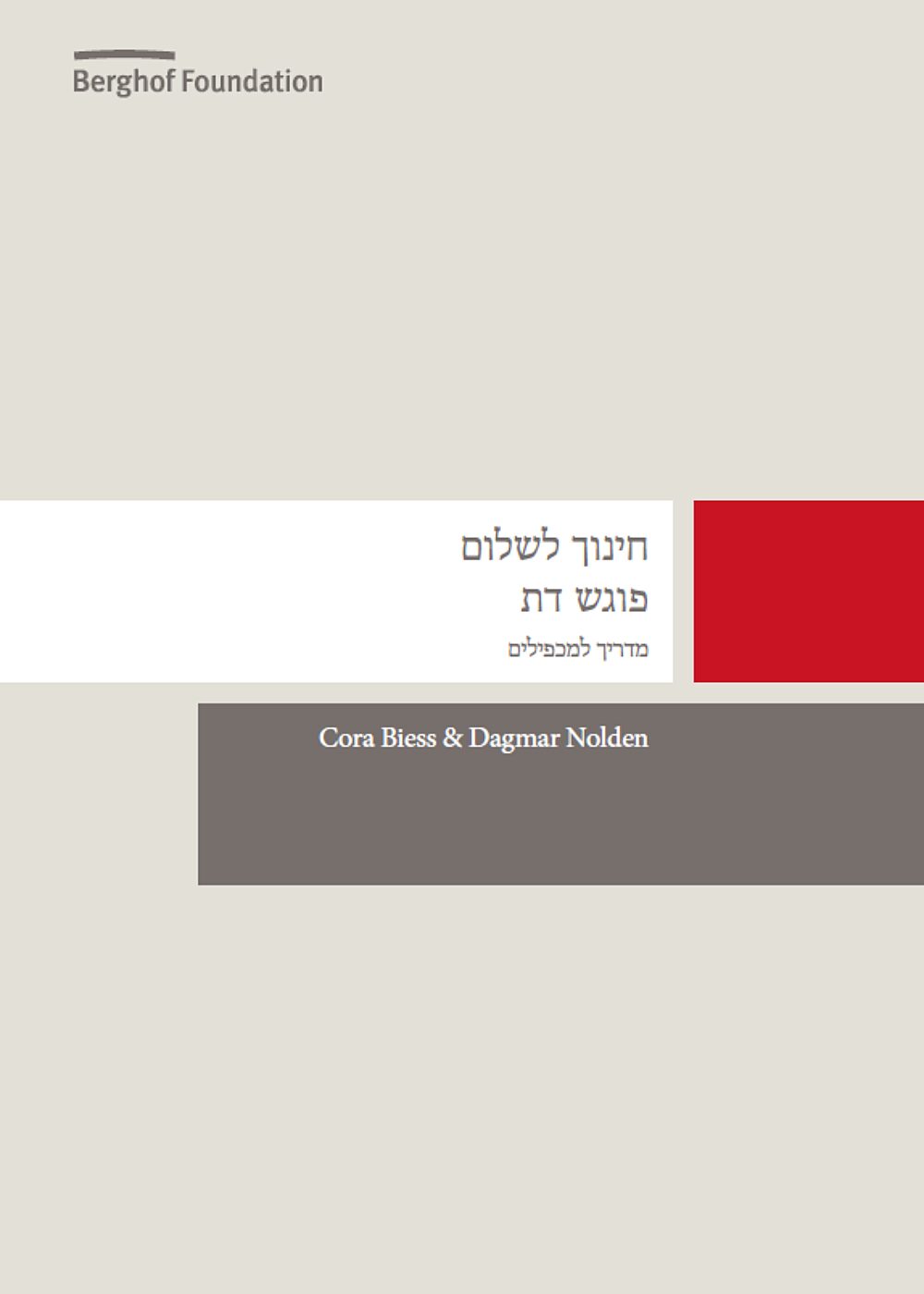
חינוך לשלום פוגש דתמדריך לסוכני שינוי
מסורות דתיות יכולות למלא תפקיד אמביוולנטי: במסגרות מסוימות הן יכולות לטפח אלימות או לשמש כמניע לקונפליקט. במסגרות אחרות הן יכולות להיות משאב לפעולות של שלום ולשמש "כמחברות". לשחקנים ומוסדות מבוססי אמונה תפקיד מרכזי ברתימת פוטנציאל השלום הטמון בדתות על מנת לחזק לכידות חברתית, לתמוך בבניית שלום ובשינוי מצבי סכסוך.
- Year2021
- Author(s)Cora Bieß, Dagmar Nolden

Peace education meets religionA manual for multipliers
This manual seeks to support faith-based multipliers who intend to strengthen the peace potential of religions by inspiring and training interested people and groups using peace education methods and approaches.
- Year2021
- Author(s)Cora Bieß, Dagmar Nolden

Peace Counts image setVisual impulses for interactive workshops and trainings
The Peace Counts image set is a compilation of professional reportage photographs for peace education work in international and religious contexts. It offers an inspiring visual approach to topics such as peace and peacebuilding, conflict and conflict management or transformation and change.
- Year2021
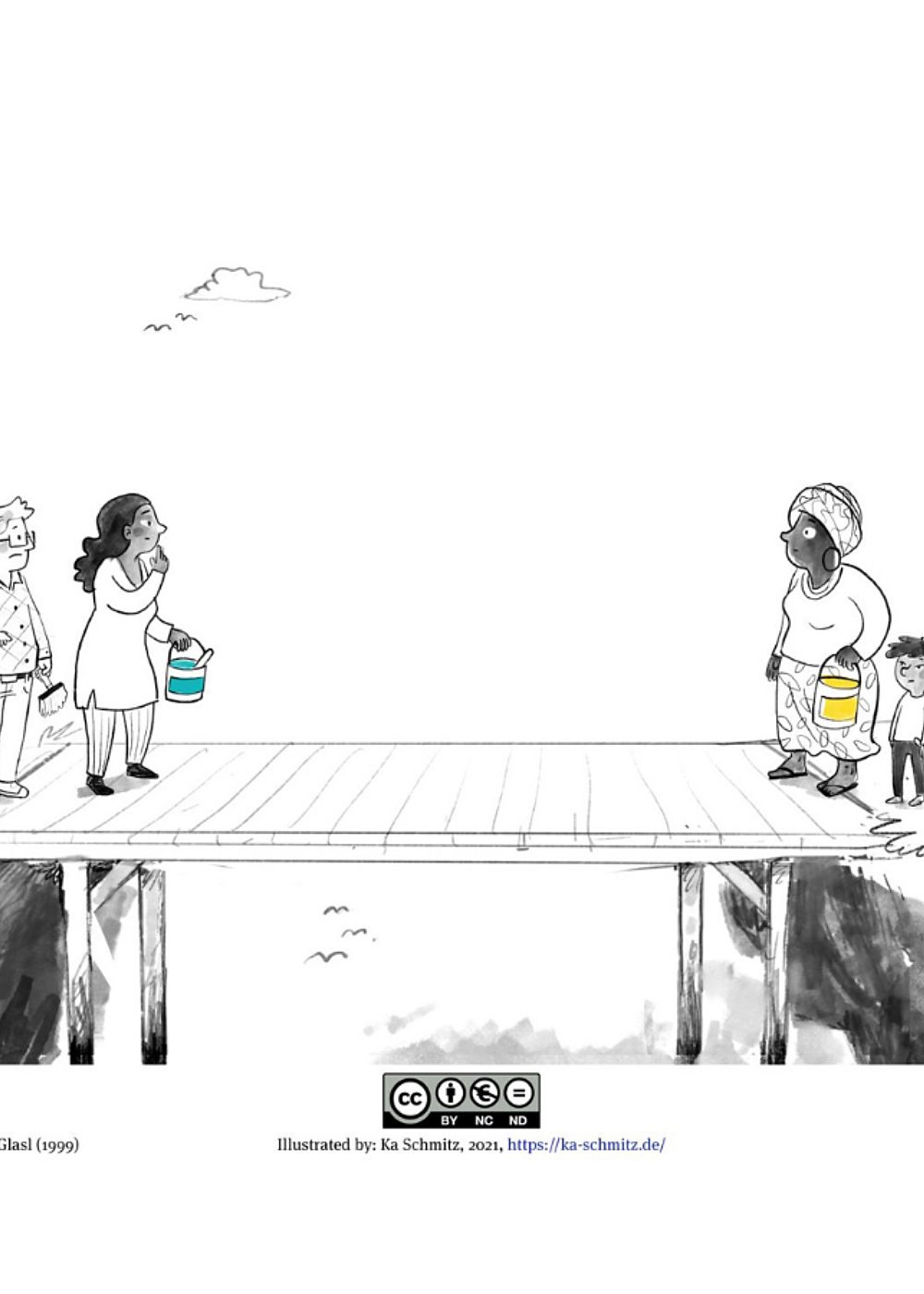
Culture of conflictA picture cards series for interactive teaching and training
The series of nine picture cards is a peace education tool that explains conflict dynamics in an interactive way and that demonstrated possibilities how conflicts can be managed constructively.
- Year2021
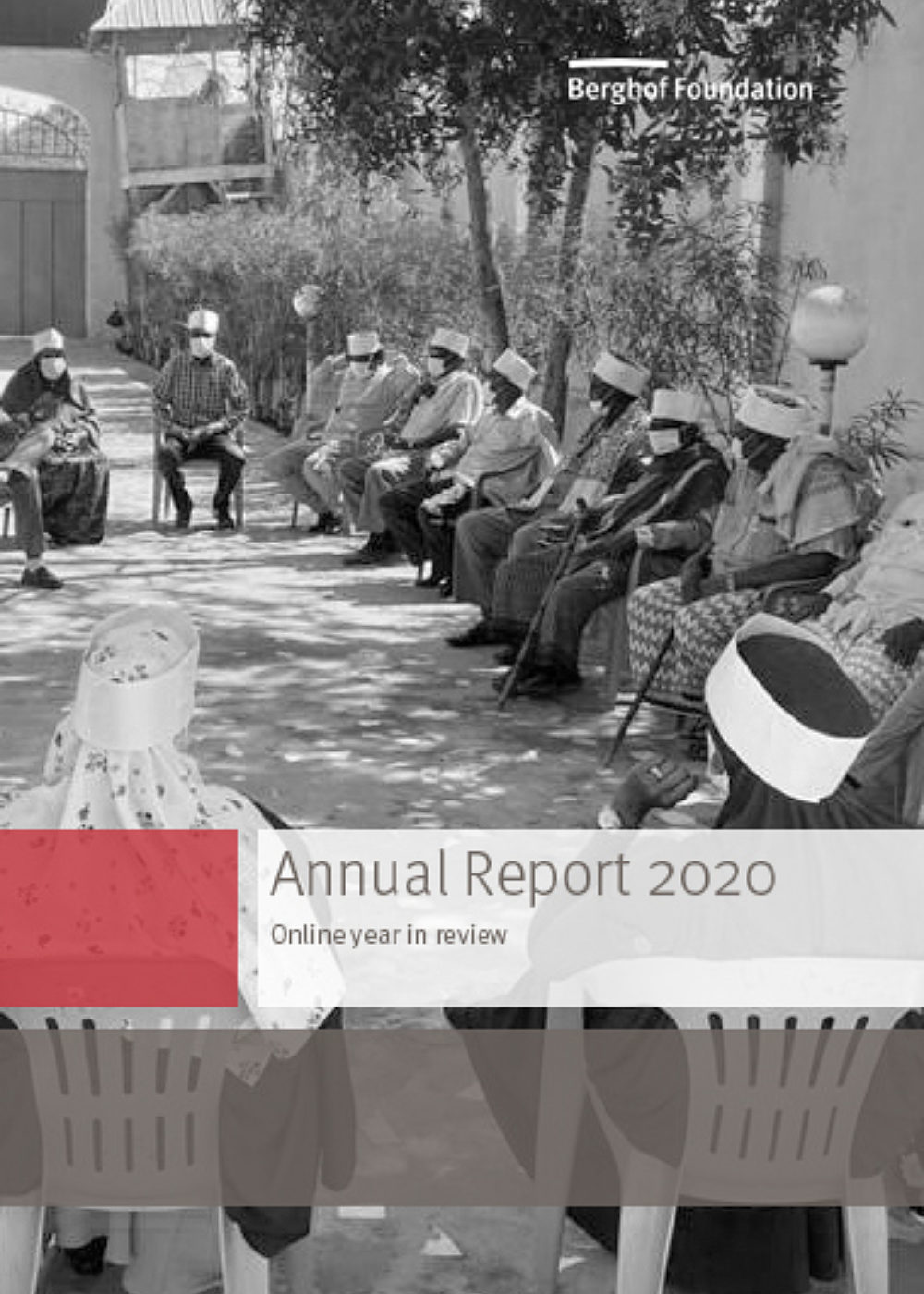
Berghof Foundation Annual Report 2020Online year in review
Our 2020 annual report gives an overview of our work around the world during the year as well as insights into our finances and funding.
- Year2021
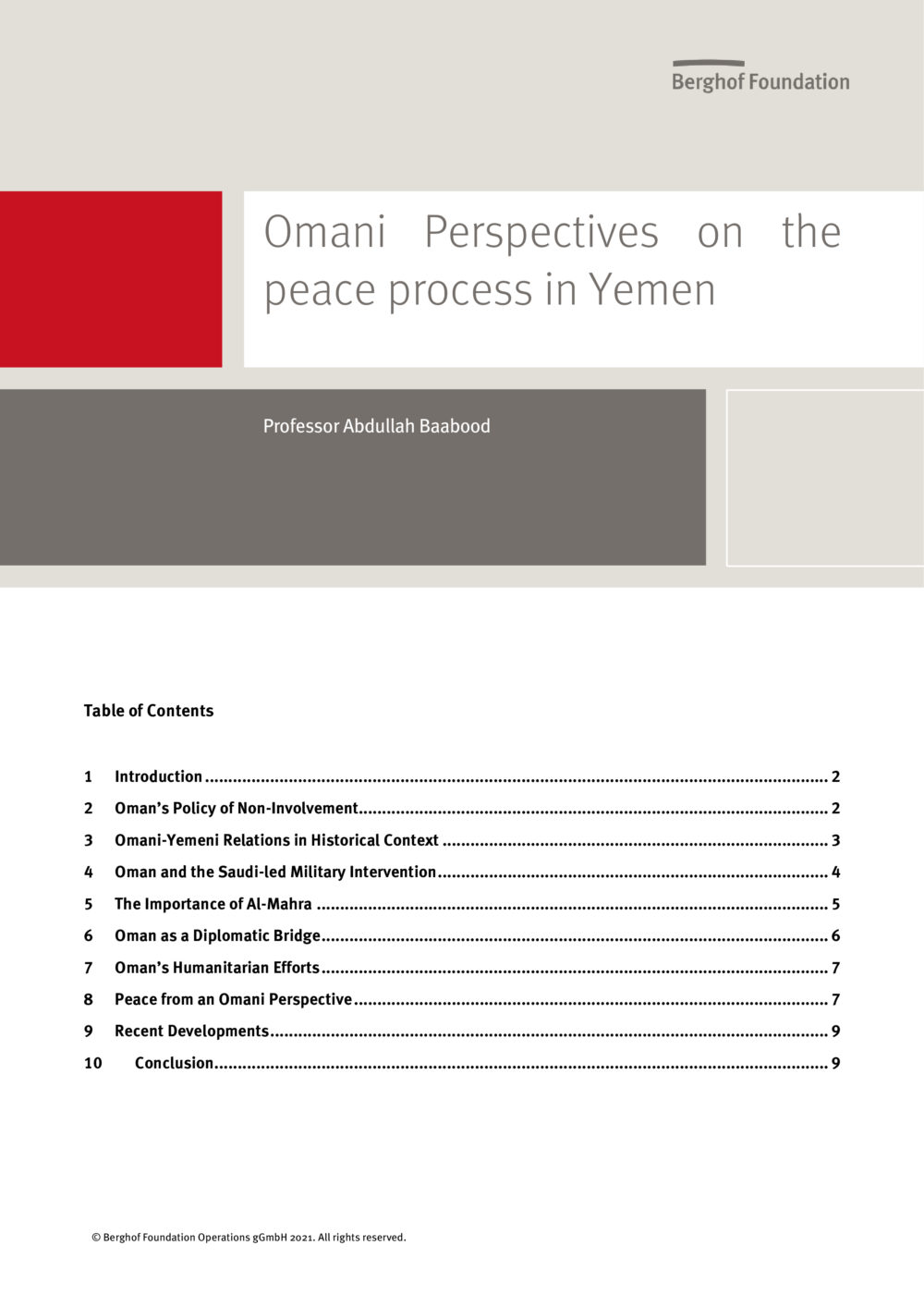
Omani perspectives on the peace process in Yemen
Oman has played an important role in supporting mediation efforts since the conflict in Yemen began. The country’s amicable relations with Saudi Arabia, Ansar Allah, Iran, and other Yemeni and international conflict stakeholders has allowed it to facilitate negotiations in a manner few other countries are able or willing to realise. This comes in the context of Oman’s established history of attempting to bring conflicting parties from its immediate western neighbour to the table at critical junctures. These efforts were again reactivated in early 2021 with the facilitation of talks between belligerents in the current conflict and international representatives in Muscat.
- Year2021
- Author(s)Abdullah Baabood

Zum Kritischen Umgang mit VerschwörungstheorienErkenntnisse für die Pädagogische Praxis
Seit Anfang 2020 führt die Berghof Foundation im Rahmen des Bundesprogrammes Demokratie leben! ein mehrjähriges Modellprojekt zum Thema durch. Das Ziel: Die Entwicklung eines Toolkits gegen Verschwörungstheorien, gemeinsam mit Jugendlichen und für Jugendliche. Dazu hat im September 2020 eine interdisziplinäre digitale Fachtagung mit Expert*innen aus Wissenschaft und Praxis stattgefunden. Aus dieser Tagung ist der vorliegende Band entstanden. Die darin enthaltenen Beiträge sollen die wichtige aktuelle Diskussion über angemessene (pädagogische) Gegenmaßnahmen zur Verbreitung von Verschwörungstheorien und zur Stärkung von demokratischen und friedensorientierten Grundhaltungen bereichern.
- Year2021
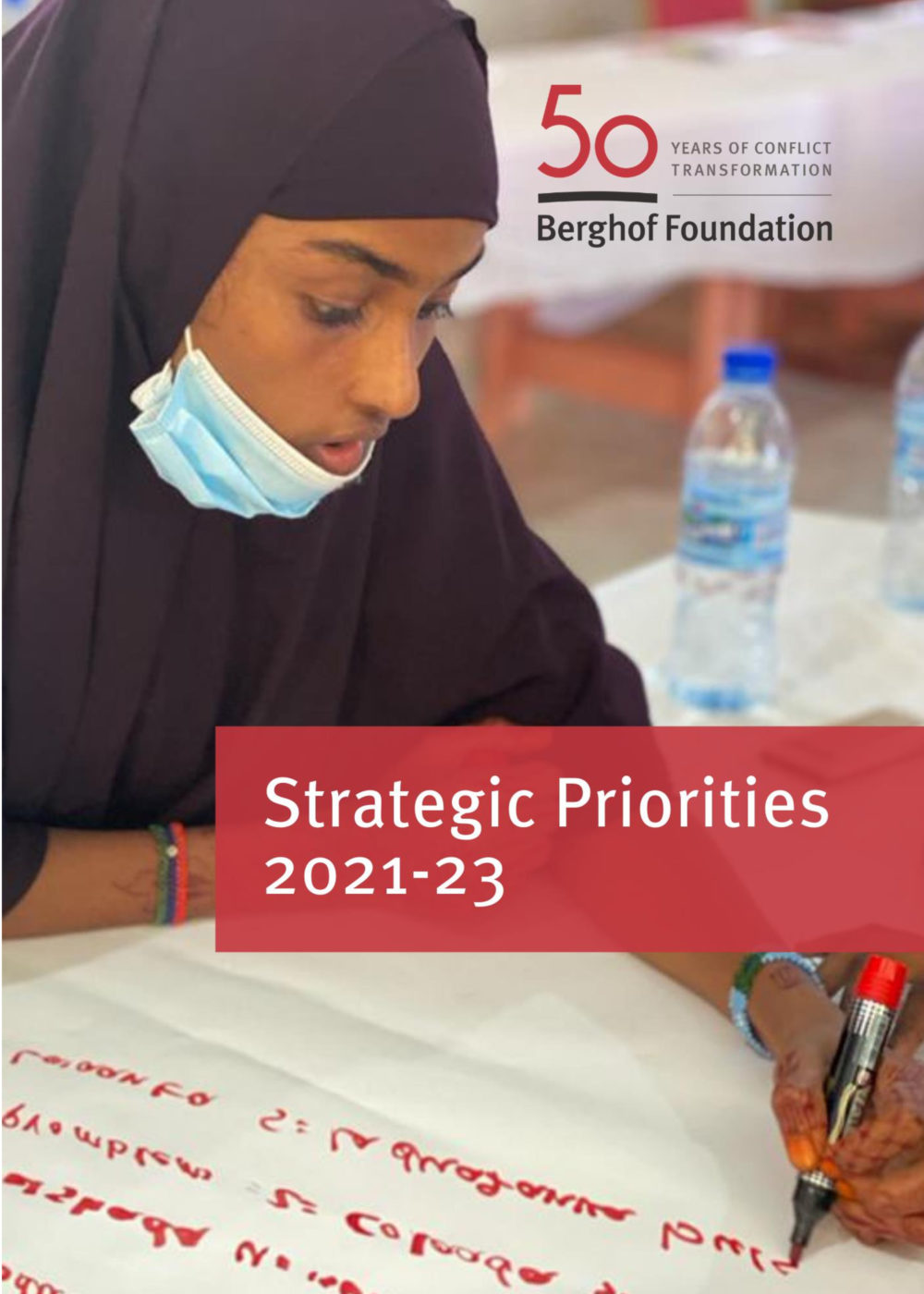
Berghof Foundation: Strategic Priorities 2021-2023
In light of the shifting global context, the Berghof Foundation as an organisation has to adapt as well. We are therefore expanding our activities beyond our established focal areas into six additional areas of strategic importance. This involves building up new expertise, new forms of collaboration, and new ways of working. This work has already begun. How Berghof intends to go about it over the next three years is the subject of this document.
- Year2021
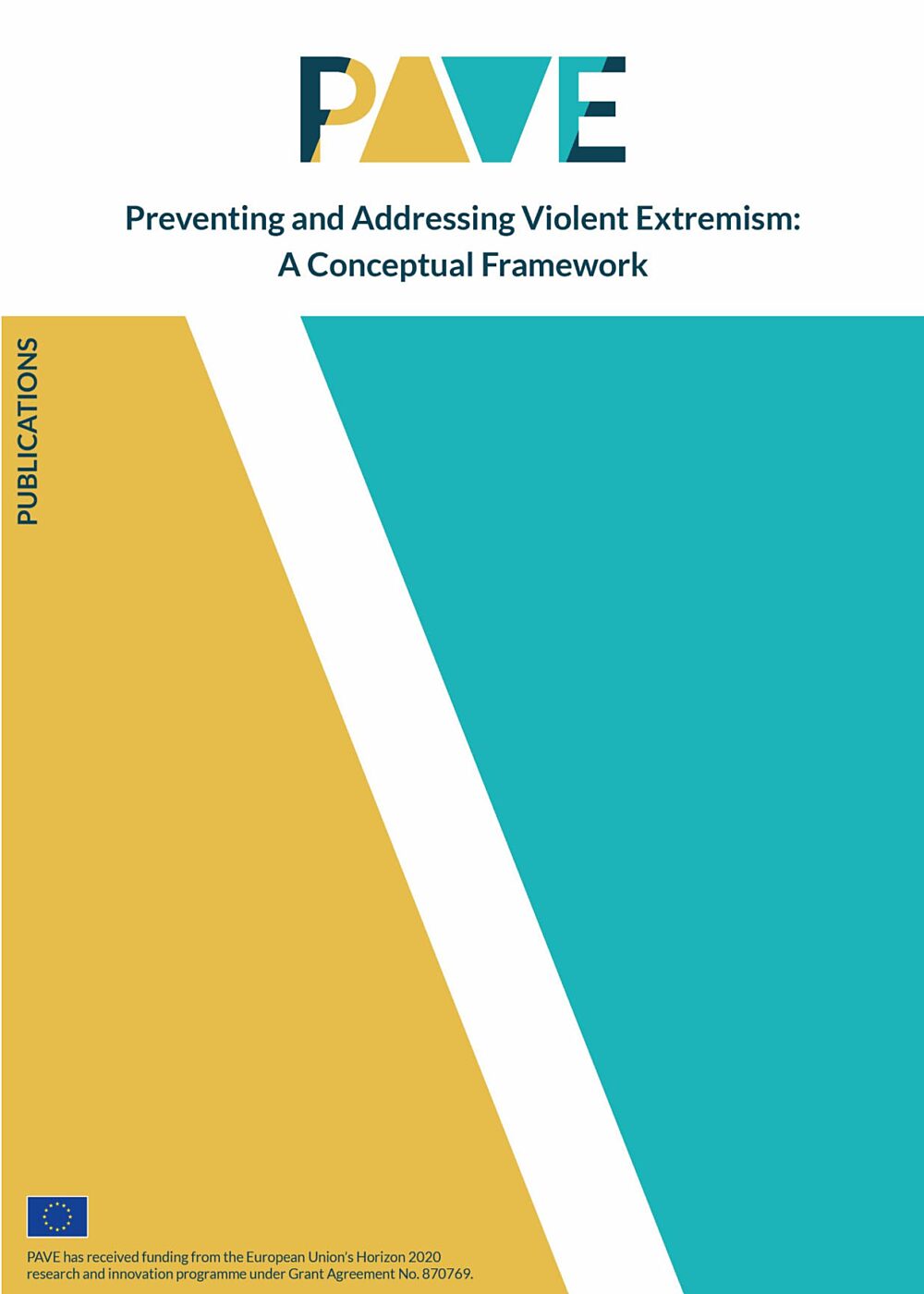
Preventing and addressing violent extremismA conceptual framework
This paper represents the theoretical framework behind the PAVE project that aims to tackle the issue of radicalisation by examining its root causes and driving factors.
The project is based on a comparative assessment of local communities' vulnerability or resilience to violent extremism in seven countries: Bosnia and Herzegovina, Iraq, Kosovo, Lebanon, North Macedonia, Serbia and Tunisia.
- Year2021
- Author(s)Maja Halilovic Pastuovic, Gillian Wylie, Karin Göldner-Ebenthal, Johanna-Maria Hülzer, Véronique Dudouet

Constitutions and peace processes: A primer
Peace processes often confront conflict issues that have deep constitutional relevance, and yet the obvious link to “constitution making” and the need for constitutional expertise are seldom acknowledged. The role of constitution making in peace processes is understudied and there is little practical guidance for individuals involved in peace processes, especially the mediators, negotiators and other actors who support them, on how to engage with constitutional elements in peace processes.
- Year2021
- Author(s)Berghof Foundation, United Nations DPPA – Mediation Support Unit